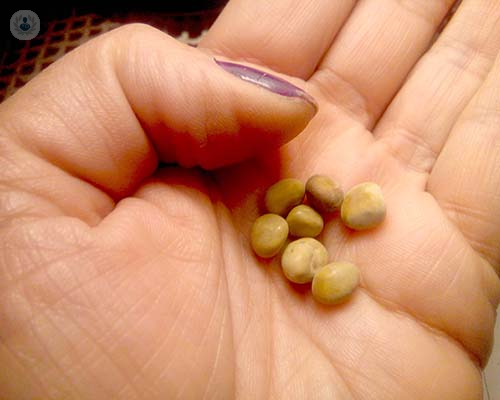
Lithotripsy: effective treatment for kidney stones
Lithotripsy is a medical procedure that uses shock waves to remove kidney, bladder and urinary tract stones. It is a word derived from the Greek lithos for stone and the Latin terere, to crush.

There are different methods of lithotripsy that are applied according to the size, consistency, shape and location of the stone in the urinary tract. Different lithotripsy devices are used, which apply different energies, with the common purpose of destroying urinary stones without the need to practice open surgery as in the past. This lithotripsy technique was developed and began to be applied to patients in 1980 in Germany by Dornier Medizintechnik GmbH, a company now known as Dornier Medtech 1. They introduced the HM-3 lithotripter, a device to carry out the procedure to disintegrate kidney stones, or stones in the upper urinary tract.
Extracorporeal shock wave lithotripsy
This treatment for kidney stones is called “extracorporeal” because it is used outside the patient's body. The stone is identified by means of special x-ray equipment, with fluoroscopy and / or ultrasonography. The machine emits ultrasonic waves, which pass through the body until they hit the kidney stones. These waves produce two mechanical forces on the stones:
1. A direct force associated with the high amplitude of the shock wave, generating a sudden pressure change.
2. Cavitation bubbles around the stone breaking it into tiny fragments that pass easily through the urinary ducts, in the patient’s urine.
The patient lies down on an examination table, on a soft cushion filled with water and sedatives and antibiotics are given to prevent pain and infection. The procedure lasts from 45 to 60 minutes, and then the patient will go to the recovery room for a couple of hours to be monitored while the effect of the sedatives wears off. Medications are prescribed and general post-operative recommendations are advised.
This modern procedure avoids the major open surgery that was practiced before this extraordinary technology.
Types of lithotripsy
There are other methods of lithotripsy to treat urinary stones, depending on the location, shape and size of the stones.
- Percutaneous lithotripsy: for when the kidney stones are larger than 2 centimetres and are lodged in the kidney cavities. A puncture is performed through the patient's skin in the renal region, assisted or guided by fluoroscopy (X-ray) or ultrasonography, and the urologist will use their preferred method to destroy and remove the kidney stones. Methods include: laser, electrohydraulic, sonic or ballistic.
- Uretrolithotripsy: for stones in the urethra, the 0 degree lens for direct horizontal vision is used, with the option of the different energy types mentioned above.
- Cystotomy-otomy: to remove bladder stones and performed in the same way as the above methods, but using a thicker lens called a cystoscope, which can also be rigid or flexible.
- Uterus Lithotripsy: to destroy stones in the uterus performed as previously described but using a special lens called uretero-renoscope, which can be rigid or flexible.
If you think you might have kidney stones, see your GP or book an appointment with a urologist or nephrologist.

